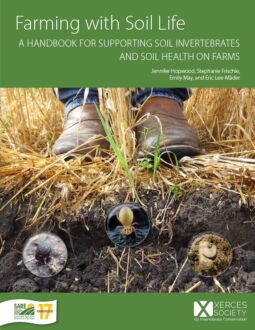SOIL MACROFAUNA includes diverse groups of animals that contribute to complex food webs as predators or decomposers. These fauna can create their own spaces in the soil and influence soil structure through the moving and mixing of soil. Macrofauna can be collected by hand and counted in the field, though identification of many species requires preserved specimens and expertise. All of the organisms in the following profiles are in Kingdom Animalia.
Earthworms
PHYLUM: Annelida » CLASS: Oligochaeta » ORDER: Opisthopora
SIZE: 0.39–15.7" (1–40 cm).
ECOLOGICAL ROLE: Earthworms are often the most familiar of the soil fauna, and they are also among the most important. Earthworms influence soil structure through their burrowing activities—some can burrow as deep as 8' (2.4 m)—and fragment and bury organic matter, mixing it with soil. Earthworm casts include minerals that are otherwise inaccessible to plant roots.
DESCRIPTION: Earthworms have soft, segmented, tubelike bodies. The anterior portion of the body houses the hearts, reproductive structures, and a mass of nerves, and this region can be recognized by the smooth, belt-like swelling near the front of the worm.
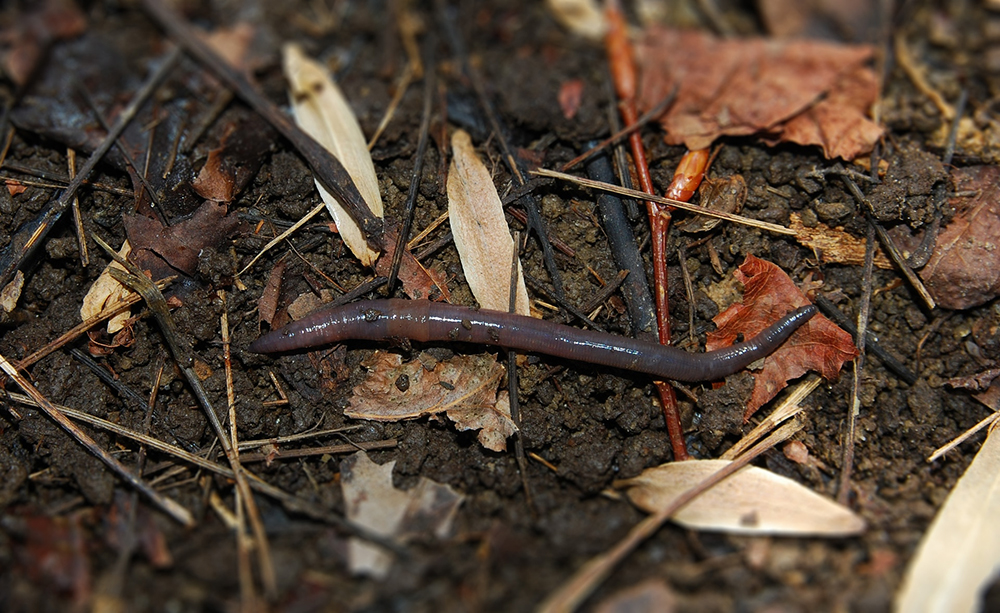
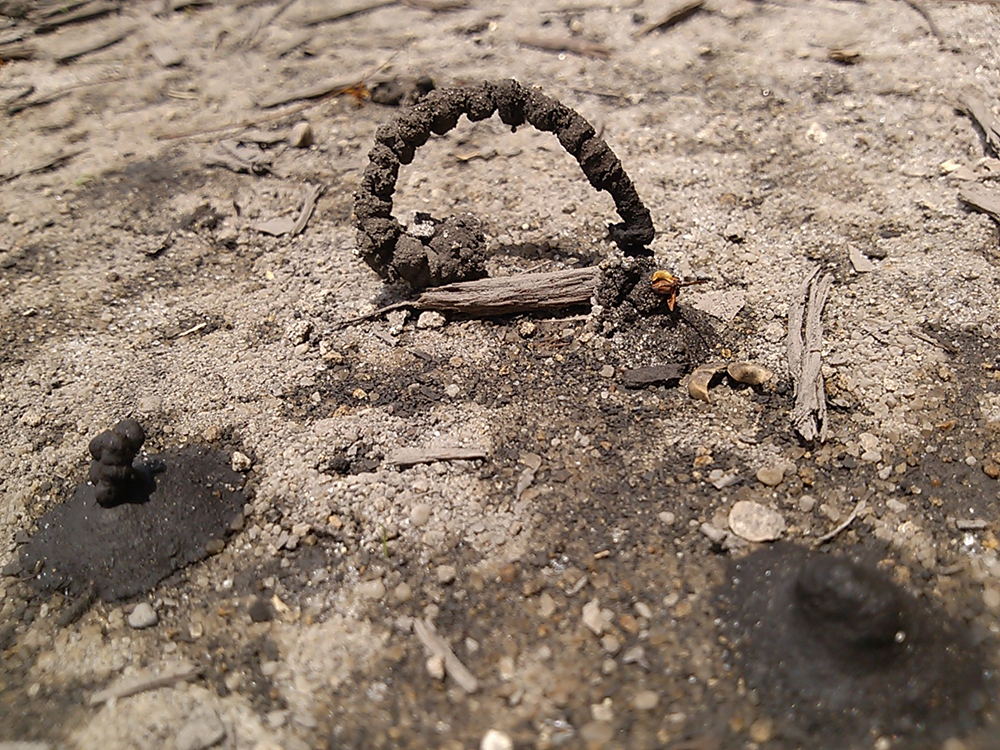
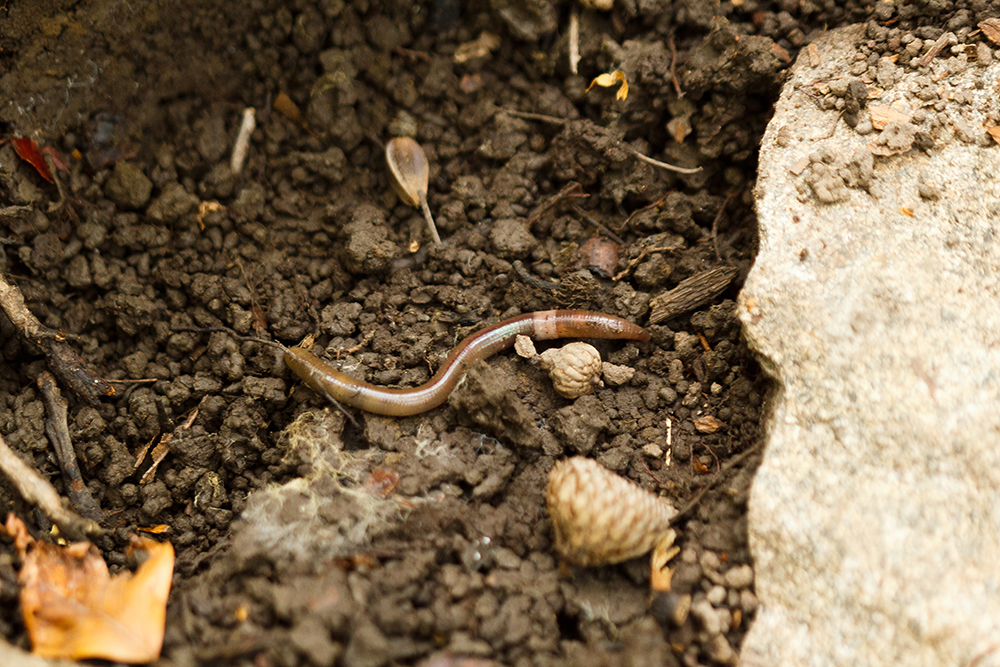
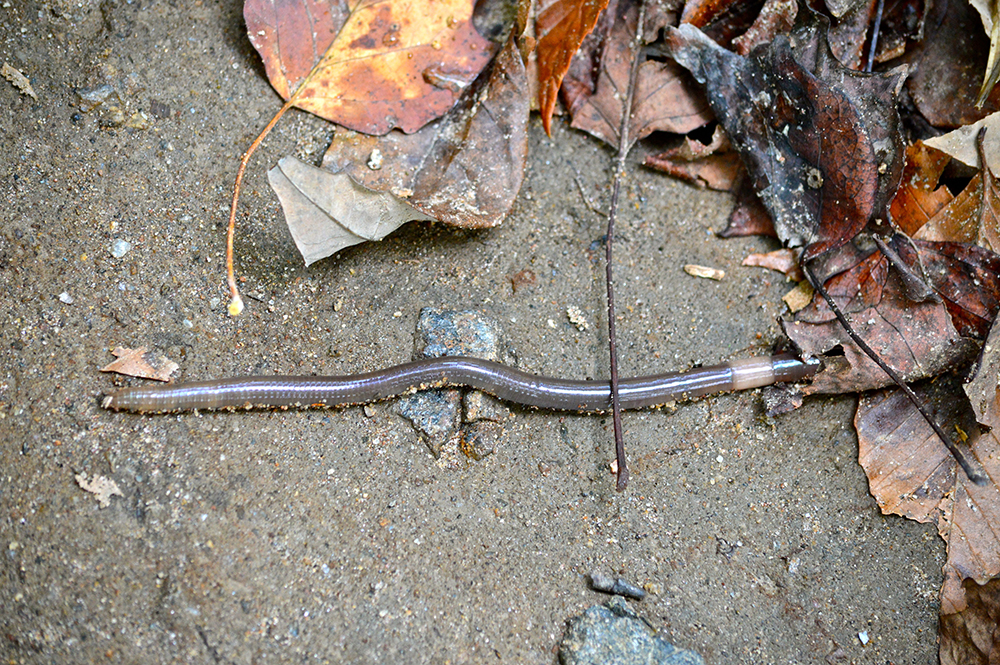
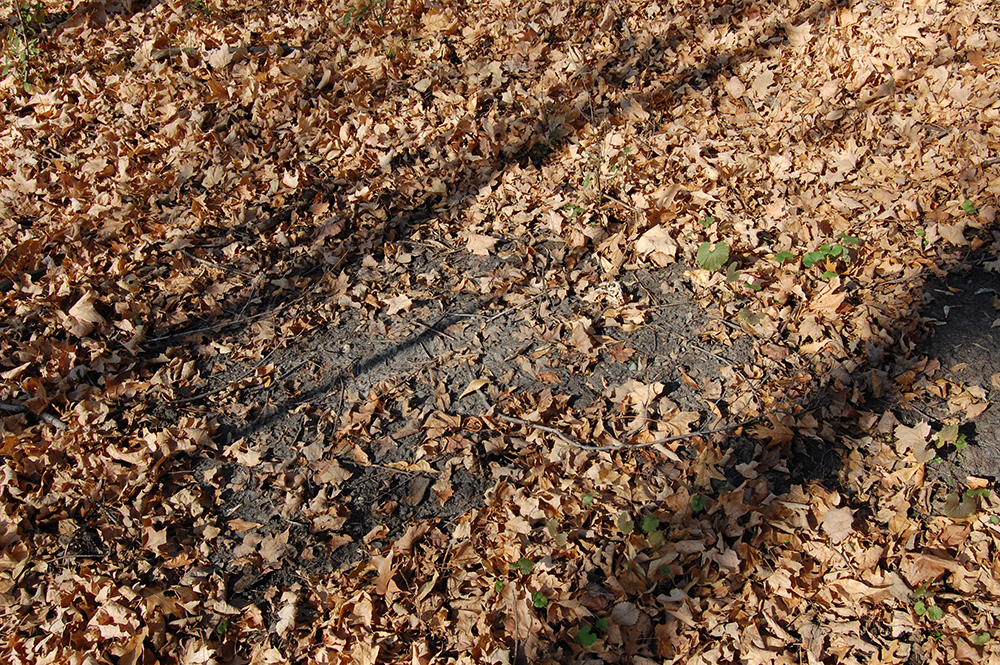
WHERE THEY ARE FOUND: Most often, earthworms are found in soil and leaf litter. Different species are found at different levels in the soil, with some living on the soil surface (epigeic), in topsoil (endogeic), or burrowed in deeper layers (anecic).
WHAT THEY EAT: Earthworms consume leaf litter and soil, including its minerals and organic matter.
LIFE CYCLE: All individuals have both male and female sex organs, and they exchange sperm during mating. Earthworm young develop within a cocoon in the soil and emerge looking like smaller adults. They reach maturity at around six weeks. Worms can live for four or more years.
APPROX. NUMBER OF KNOWN SPECIES: 7,260 worldwide (about 100 native to North America, plus approximately 45 introduced).
RELATIVE ABUNDANCE: On average, there are 100 to 500 earthworms per square meter, typically representing a large proportion of soil faunal biomass. Earthworms are less common in arid or acidic soils, with less than 10 per square meter, and more common in fertilized pastures, with more than 2,000 per square meter. Earthworms are most abundant in temperate and tropical forests and grasslands, and they’re less diverse and abundant in deserts and polar regions.
NOTES OF INTEREST:
- Earthworm casts have about 50% more nutrients (calcium, nitrogen, phosphate, and potassium) and bacteria than surrounding soil. Earthworm casts also include calcium carbonate, a compound that lowers soil acidity.
- Worldwide, earthworms have been introduced through human activities (e.g., agriculture or fishing). In the United States, some localities have all native species, some have all exotic species, and some have a mix.
- Forests are negatively impacted by nonnative earthworms, such as the Asian jumping worms (Amynthas and Metaphire spp.) found throughout the eastern and southern United States, as well as parts of the Midwest and Oregon. Jumping worms feed at the soil surface, consuming leaf litter and organic matter, and leaving behind worm castings that are depleted of nutrients and can’t hold water. Asian jumping worms do not recycle and mix nutrients within the soil layers or create channels for plant roots. As jumping worms outcompete other worms, the resulting changes in soil structure reduce native plants and habitat and shelter for invertebrates, birds, amphibians, and other wildlife. Native earthworms are responsible for soil structure in the forests of the Pacific Northwest.
- A few native species in the United States can reach a foot in length or even more. The giant Palouse earthworm (Driloleirus americanus) can be up to 3.28' (1 m) or more in length, though modern specimens have been smaller. Note: this species is thought to be in decline, and few individuals have been found in the decade beginning in 2010.
- Charles Darwin devoted his last book, The Formation of Vegetable Mould, Through the Action of Worms (1881), to earthworms. He wrote, “It may be doubted whether there are many other animals which have played so important a part in the history of the world, as have these lowly organised creatures.”
- Darwin observed that earthworms could learn and adapt their behaviors based on their experiences.
- For example, he noted that they figured out which part of a leaf to pull on to most successfully get the leaf into their burrow.
- Earthworms have the ability to regenerate some lost segments, though this is not well understood.
- Tillage, along with pesticides, can reduce the density of earthworms or remove them entirely. Long-term agronomic trials, including some trials in operation for more than 170 years, have found significant declines (50–100%) in earthworm biomass under intensive agricultural management. However, degraded soils converted to conservation management often show an increase in earthworm densities.
- In Australia, earthworms in the genus Megascolides can reach lengths of 9' (2.7 m).
Slugs and snails
PHYLUM: Mollusca » CLASS: Gastropoda.
SIZE: 0.059–4.7" (1.5 mm–12 cm).
ECOLOGICAL ROLE: Snails and slugs are decomposers and scavengers, and they are particularly important in moist ecosystems. Some species are predators. Snails are important in calcium cycling, concentrating calcium in their shells. Snails are important food sources for wildlife, passing calcium further into the food web as they are eaten by predators.
DESCRIPTION: Snails and slugs are soft-bodied animals with one or two pairs of retractable tentacles on their heads (their eyes are on the uppermost tentacles) and a strong, muscular foot. Their foot is coated in a slimy layer of mucus that reduces moisture loss and helps them to traverse rough surfaces. Slugs and snails use a radula, a structure with rows of teeth, to scrape food from surfaces. Snails carry a shell enriched with calcium on their back, and some species can retract their body inside the shell.
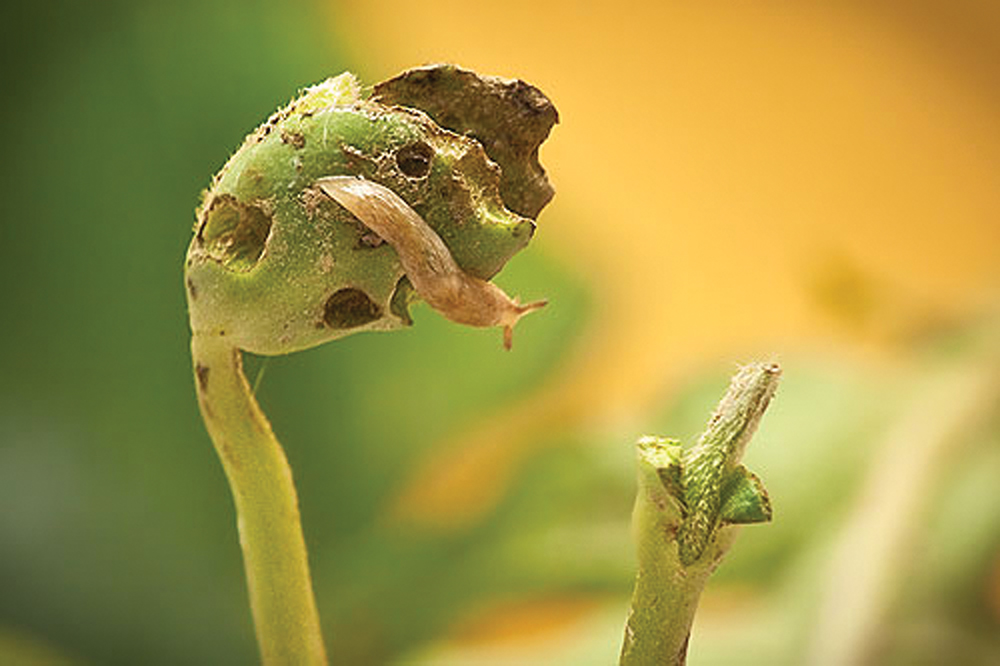
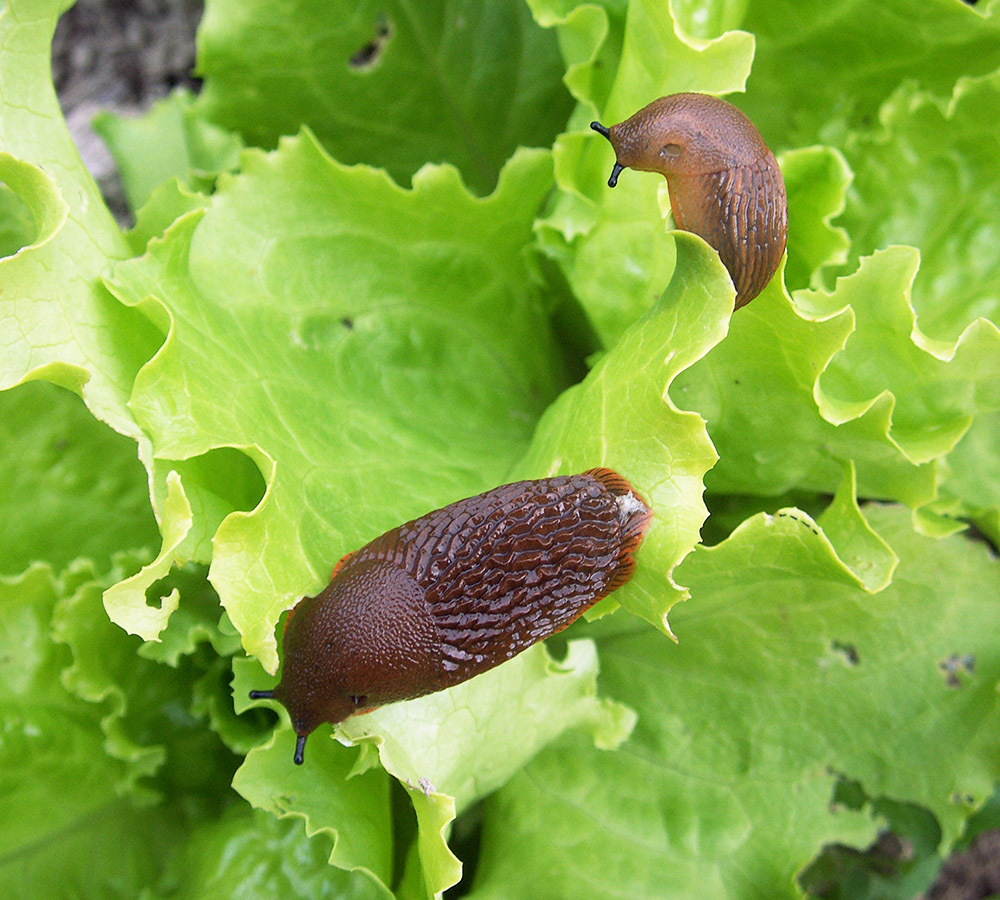
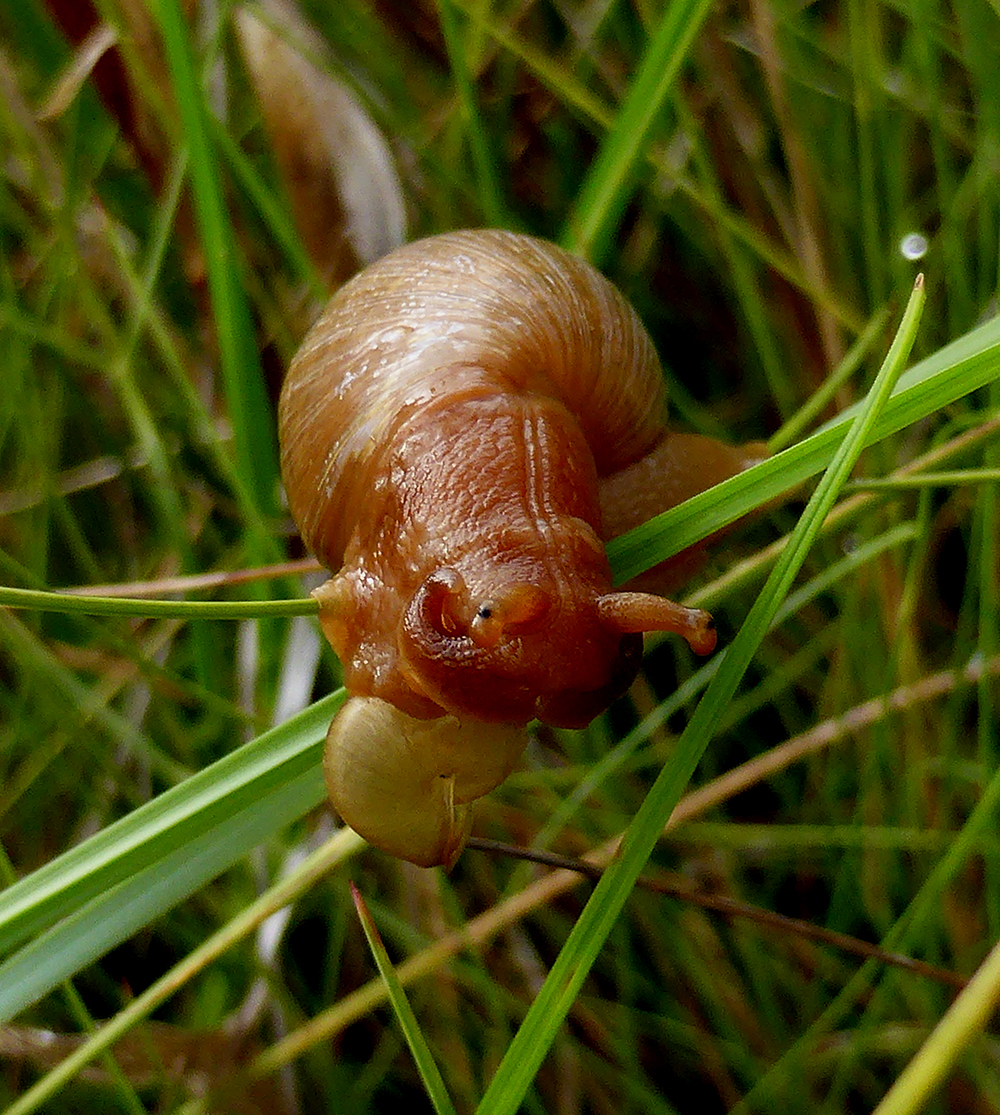
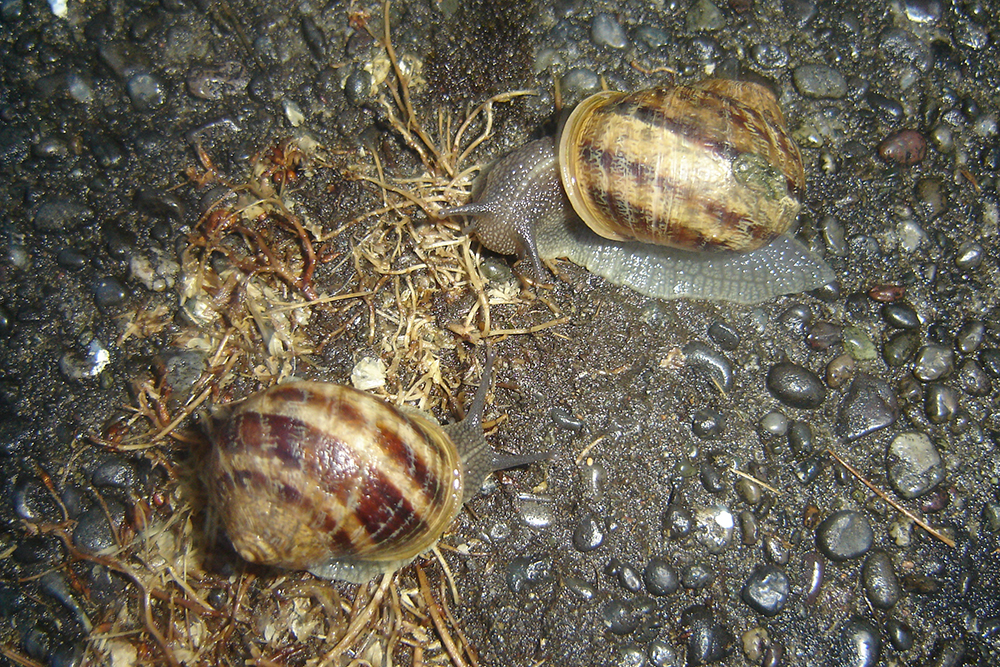
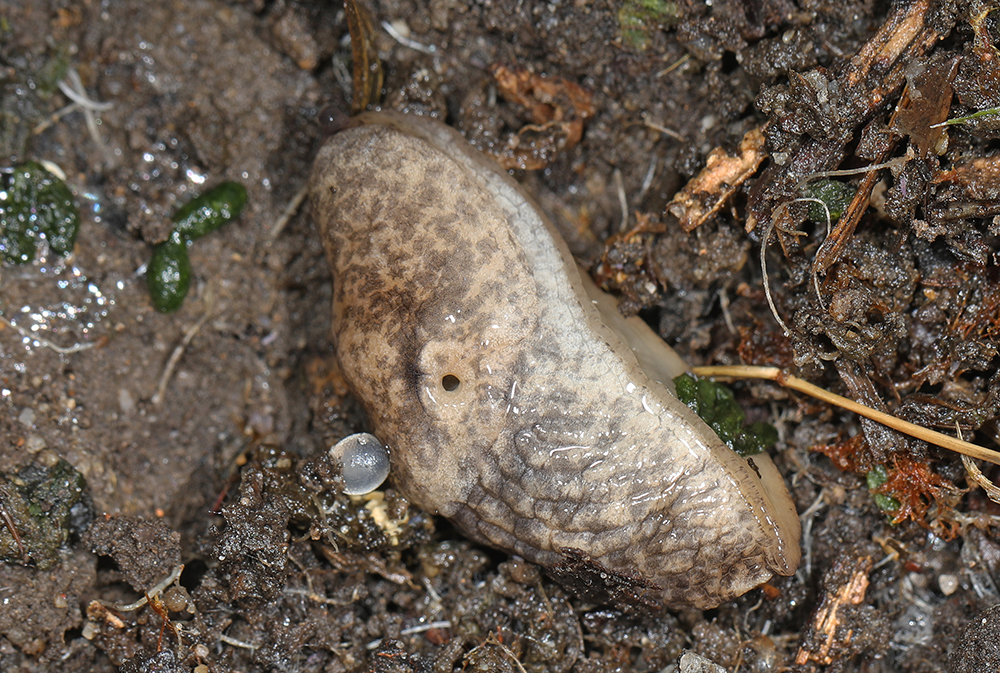
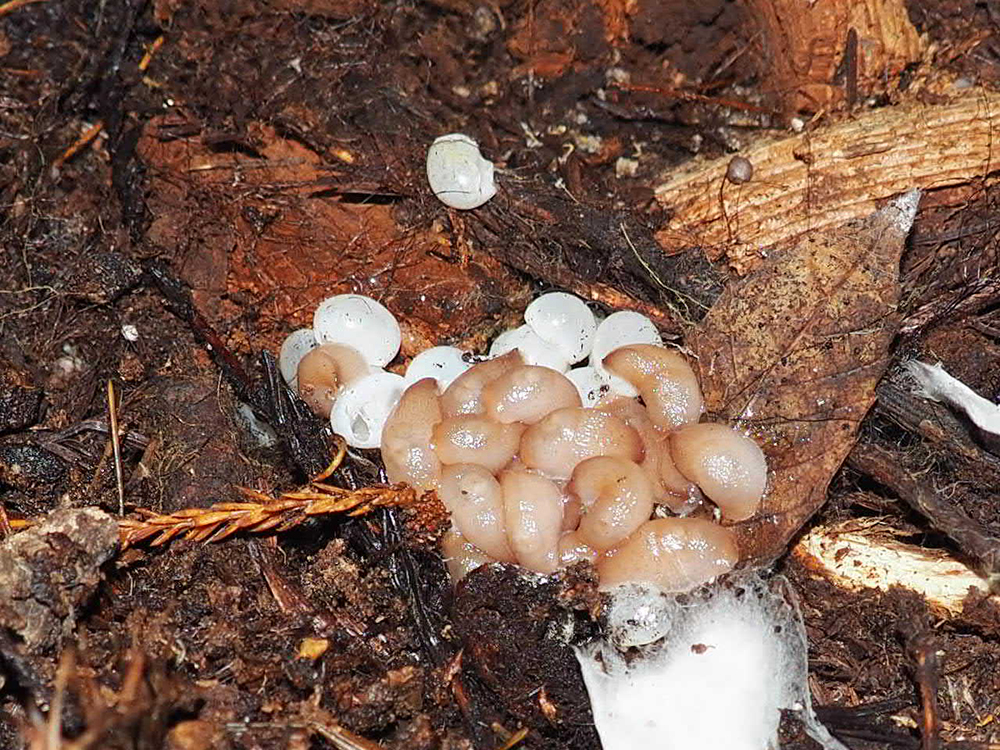
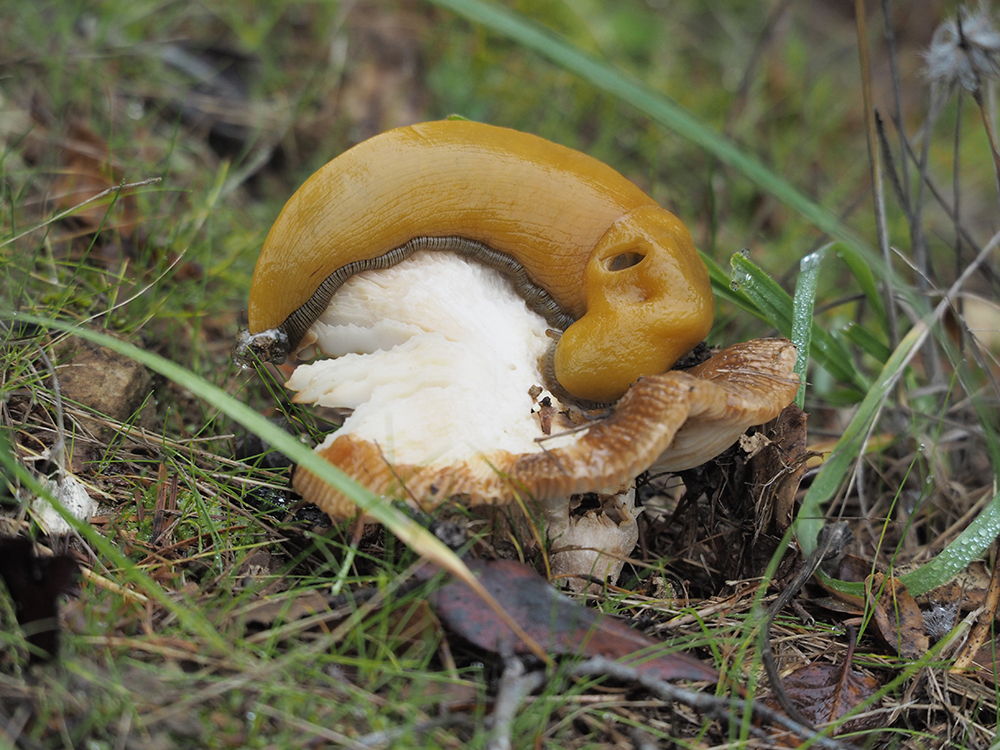
WHERE THEY ARE FOUND: Land slugs and snails are found in leaf litter and soil, at the base of grasses and sedges, and under logs, the bark of dead trees, and rocks. Slugs can sometimes live in places snails cannot because they have no shell and therefore have fewer calcium requirements. Slugs and snails don’t disperse readily, but they are moved frequently through human activities (such as the importation of food and plants, and the transport of soil, logs, and plants), and there are a number of introduced species in the United States.
WHAT THEY EAT: Slugs and snails feed on fungi, decaying plant matter, feces, carrion, and fresh plant material. Predatory snails and slugs feed on earthworms, potworms, and other snails or slugs.
LIFE CYCLE: Slugs and snails lay eggs in clusters in moist places, such as under logs or leaf litter. Newly hatched young are small versions of adults, though young slugs often have lighter, different color patterns, and young snails have nearly translucent shells. Slugs reach maturity between three to nine months, and all are hermaphroditic, mutually exchanging sperm during mating. Many species die after egg laying. Snails may live for a few months, but some take longer to mature and may live for four or more years. Slug and snail activity depends on the season—in winter and dry, hot summer weather, species burrow under soil or logs and are inactive.
APPROX. NUMBER OF KNOWN SPECIES: 30,000 land snails and 500 land slugs worldwide (1,100 native snails and 40 native slugs in North America).
RELATIVE ABUNDANCE: In North America, native slugs are not typically abundant under natural conditions. Introduced species can become locally abundant.
NOTES OF INTEREST:
- Gastropod is derived from the Greek words for belly (gastros) and foot (podos), and indeed these animals do travel on their bellies.
- Land snails are food for beetles, millipedes, other snails; parasitic mites, nematodes and flies; and salamanders, turtles, small mammals and birds.
- Snails don’t move very far during their lives and can be indicators of habitat conditions or pollution (e.g., they take up toxic cadmium).
- Land snails are a food source for people, though some snails can be hosts to mammalian parasites.
- Introduced species of snails and slugs cause a host of ecological problems; slugs from the family Arionidae are significant pests in the eastern United States, and Theba pisana is an ornamental and crop pest in California. There are many species of slugs that have been introduced in the United States (e.g., the Northeast has three native slug species and 13 intro species). There are least 70 species of nonnative snails in the United States.
- The majority of land snails have lungs but a few have gills, and these species usually live in very damp places.
- The foot of snails and slugs moves by successive, wavelike contractions.
- The trails of snails and slugs have chemical components that can attract mates and predators, and repel competitors.
- Banana slugs (Ariolimax), found in the Pacific Northwest, are important members of forest communities.
- Slug slime can absorb lots of water (one estimate: 100 times its original weight).
- Slugs and snails have courtship displays, with some that include a dance.
This material is based upon work that is supported by the National Institute of Food and Agriculture, U.S. Department of Agriculture through the Sustainable Agriculture Research and Education (SARE) program. Any opinions, findings, conclusions, or recommendations expressed in this publication are those of the author(s) and should not be construed to represent any official USDA or U.S. Government determination or policy.
